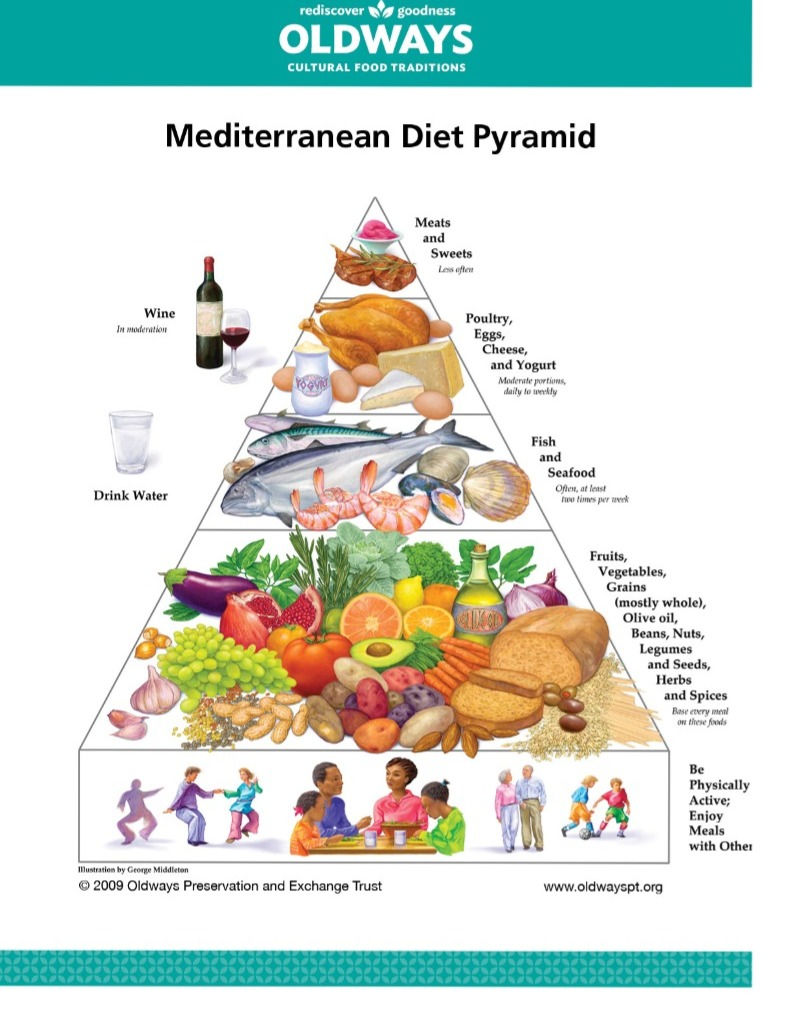Peripheral Artery Disease and the Mediterranean Diet
- Michele Blanchet, Registered Dietitian
- Aug 30, 2020
- 2 min read
Risk factors for the development of coronary artery disease and peripheral artery disease (PAD) are similar — high cholesterol, smoking, diabetes, obesity and high blood pressure.
When it comes to diet, it has been clear for decades that the Mediterranean Diet and Lifestyle offers one of the healthiest eating patterns and ways of living, in the world. Research shows that people who follow a Mediterranean diet have a lower risk of heart attack and stroke risk, and yes PAD; patients with a high risk of developing heart disease also lowered their diabetes risk when they followed this diet. If you follow a Mediterranean diet, olive oil, nuts, fish, grains, fruits and vegetables form the core of your eating plan.
A study published in JAMA (The Journal of the American Medical Association), 7,477 men and women in this first randomized clinical trial suggested an association between a dietary intervention and (reduction in) peripheral arterial disease with following the Mediterranean Diet, cutting the risk of PAD — cholesterol, fat, and fibrous tissue lining the inner surface of arteries, limiting the amount of oxygenated blood to the legs, arms, head, and internal organs.
The Core of the the Mediterranean Diet
Key components of the Mediterranean Lifestyle characterizes the traditions and dietary patterns of countries bordering the Mediterranean Sea. Here individuals are recognized to have one of the longest life expectancies and lowest incidence of heart disease in the world.
This pattern focuses on eating whole foods, eating locally, limiting processed / prepackaged foods and emphasizes the importance of exercise and social connections.

Eating primarily a plant based diet and mono and polyunsaturated fats. Basing each meal around fruits and vegetables, whole grains, dried beans and other legumes (chickpeas, lentils), nuts/seeds, herbs and spices. Choosing healthy plant based fats like those found in extra virgin olive oil, nuts/seeds, avocados and fish, in replacement of saturated fats and cutting back on animal based proteins.
Choosing fish (at least 2 times per week), seafood, poultry and legumes more often than red meat. Eating fatty fish including seafood a few times per week, as well as poultry. Limiting red meat and when having it, choosing lean meats, in small portions, usually cut up into small pieces and mixed with plant based foods as the main entree.
Enjoying a small amount of yogurt and other dairy products daily. Occasionally eating your favourite full fat cheese, but in small portions.
Sweets as a celebration or a treat. Including fruit as the foundation of dessert.
Drinking red wine in moderation (optional). Taken with a meal to obtain the combined effect of the polyphenol (antioxidant) benefit of the red wine when mixed with the food.
Lastly daily physical activity, participating in other activities that bring you joy, connecting with people and sharing meals with family and friends
References and Resources:



Comments